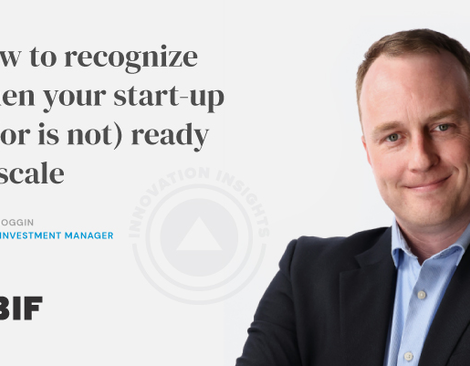- April 23, 2012
- Venture Capital
- Comments : 0
NBIF Invests $100K in CyberPsyc
By Quentin Casey for The Telegraph-Journal | click for original article
You’re standing at a podium in University of New Brunswick’s Wu Conference Centre. Looking out into the crowd, you see that every face is directed at you. They are waiting for your speech to begin.
If you fear public speaking, this is likely a nightmare scenario – one that triggers sweaty palms and a rapid heart rate. It is also a scenario recreated in virtual reality software designed by an emerging New Brunswick technology company. Based in Fredericton, CyberPsyc Software Solutions develops software for treating anxieties and phobias, including public speaking.
Founded by University of New Brunswick psychology professor Darren Piercey, CyberPsyc has delivered a string of recent achievements. Earlier this year, the company was accepted into Launch36, a New Brunswick-based accelerator program that aims to help launch 36 Maritime startups in 36 months. Each company in the Launch36 program is linked to a dedicated mentor. So whom did Piercey secure as his mentor? Gerry Pond, a New Brunswick angel investor and key figure in the Maritime tech sector.
“I got really lucky there,” Piercey says through a large smile.
Piercey’s acceptance into the Launch36 program came at a key time – just as he was wrapping up a round of fundraising. Potential investors, he recalls, were “extremely impressed” by the resources available to CyberPsyc through the Launch36 program. In the end, Piercey secured $250,000 in funding, including $100,000 from the New Brunswick Innovation Foundation. Pond also put up an undisclosed amount.
In the coming months, CyberPsyc will release early versions of two software programs, each aimed at fighting a common phobia: public speaking and visiting the dentist. The public speaking software employs 3D technology to recreate UNB’s Wu Centre, including a virtual audience. The software allows its users to practise speaking in front of the computer-generated audience. The virtual crowd even mimics many of the annoying tendencies of real audiences: some of the avatars get up and walk out, while others laugh or yell for the presenter to speak up. The idea is to simulate – as closely as possible – the source of the user’s real-life phobia.
“For the virtual reality therapy to be effective, it has to elicit a fear response,” Piercey says. “It has to make them afraid.” Only then, he says, can the user work to remain calm and – ultimately – overcome their fear.
The public speaking software was developed through research conducted in Piercey’s UNB Fredericton lab. In one experiment, he had undergraduates give a speech to a virtual TV audience. The students were asked to read Dr. Seuss’ Green Eggs and Ham. Whiledoing so, Piercey took key measurements, including heart rate and skin conductance – both indicators of nervousness. The experiment, he says, showed promise in fighting public speaking fears. “They felt positive about the experience.”
Piercey’s first attempt at fighting phobias with software involved another common fear: arachnophobia. That work resulted in a software program that is still available for sale through iTunes. But Piercey soon decided that arachnophobia software was not going to generate much money. Most people who fear spiders simply avoid the creepy crawlers. Avoiding the dentist, on the other hand, can lead to health complications. And a fear of public speaking can impact your career trajectory.
Piercey believes dentists will buy his software to help ease their patients’ fears. And large corporations, he says, are expected to incorporate his public speaking software into their employee training regimes.
The startup CEO is now securing early adopters for both the public speaking and dentistry software. Those early trials will help refine and “perfect” the two products. Then he’ll push forward into what he says is a lucrative market. According to Piercey, anxieties and phobias cost North Americans close to $50 billion a year in medication, doctor visits and lost productivity. That raises the question: What does Piercey fear? The answer: bees.
“I haven’t created the bee phobia software yet,” he says. “Maybe I should start working on that one next.”


